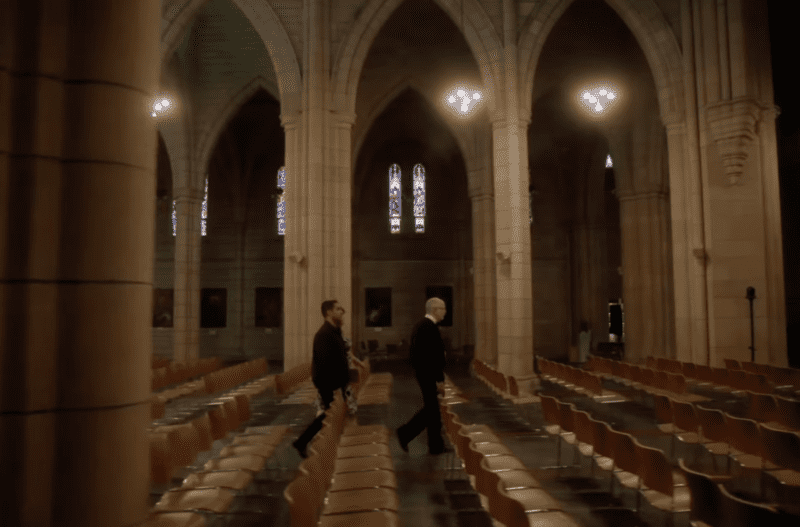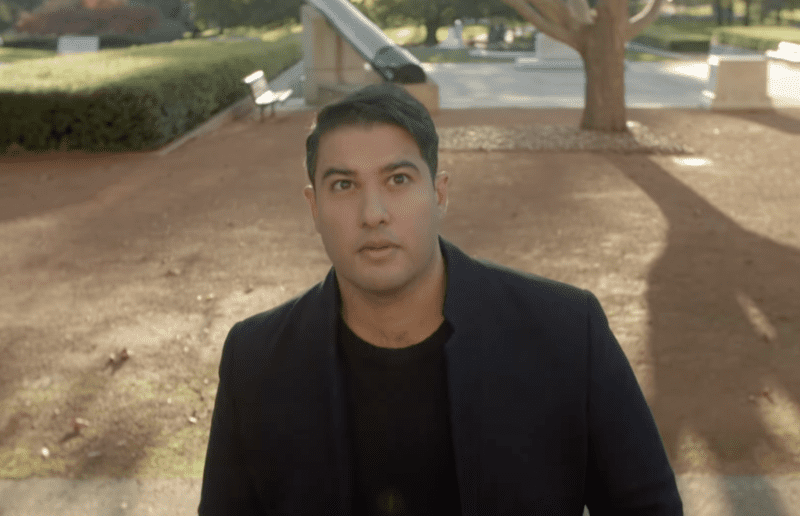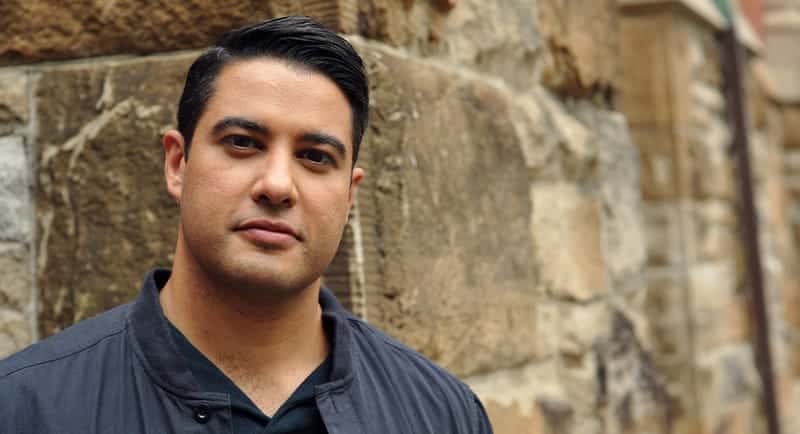Walkley award-winning journalist Marc Fennell has taken his globe-trotting adventures from ears to eyes in his new six-part series, Stuff The British Stole.
Based on his award-winning ABC podcast of the same name, Fennell explores the corners of the globe in search of answers amidst bitterly contested histories.
Each episode takes viewers through a journey of history and mystery, exploring the objects acquired through the years of the British Empire and the compounding effects this has today.
With episodes airing every Tuesday at 8pm on ABC TV and ABC iview, Mediaweek spoke to Fennell about bringing the show to a visual format.
With each episode centring around one object, usually found in a museum or gallery, Fennell poses the question: What is the story of how it got here?
“It gets wilder and wilder as the season goes on,” he said.
“When we pitched the show, I literally said it’s Indiana Jones in reverse because he goes around the world and says it belongs in a museum, and I come along and go ‘does it, though?”
From ears to eyes
In his quest to understand the origins of stolen items, Fennell meets with the people whose lives have been touched by the items stolen by the British.
The podcast started in 2020 and saw Fennell travel the world with a microphone. Fennell travelled once again for the TV series, but this time with a camera crew.
“Often on the podcast, you can build an image in people’s minds, but we really have to bring the past to life.”

With the added format of the video, Stuff The British Stole can bring another element to the storytelling process.
“We do lots of creative things to show objects and to bring the past to life,” Fennell says. “One of those rules I have is: when recorded history ends, animation begins. And so the animation has been quite a crucial part of that.”
Filming just off the back of the pandemic, Fennell says there were some restrictions on where they could go. Despite this, filming took place in Australia, Canada, Israel, Palestine, Scotland, Ireland and England.
“As much as possible, you want to kind of take people to the places where they matter and introduce the audience to people whose stories matter.”
Over the series, Fennell examines the stories of some of the world’s most valuable relics, including the true history of one of the most famous diamonds in the world, the Koh I Noor diamond and the heist of a Scottish relic that has been a part of crowning almost every British Monarch until Charles III
The show’s premiere came less than two months after Queen Elizabeth’s death. Despite the first few episodes exploring topics directly related to royalty, the only production change made after the Queen’s death was one voiceover involving King Charles.
“I just watched and listened to what people were saying and listened to how people were feeling about the Queen and our relationship with the British Empire.
“Like a lot of people, I massively respect the Queen and her legacy. But I think that we are smart enough as people to separate the Queen as a person, from the British Empire as a big large entity that did some complicated things over history.”

Exploring history from a new lens
One aspect that sets Stuff The British Stole apart from other historical documentaries is Fennell’s goal to address the imbalance of historical storytelling.
Fennell, who is of Indian-Singaporean and Irish descent, aims to offer a fresh perspective, saying, “there’s something cool about the colonised telling the story of the Empire.”
“Usually when we see stories of the British Empire, it usually some superannuated British star traipsing around, saying ‘look at this amazing thing’. There’s something kind of revolutionary about some chubby brown guy from the colonies doing it.
“I’m not saying I’m the first to do it, but I do think it’s an important distinction from the way history of the Empire is normally told,” he said.
Fennell said exploring history through this lens was an eye-opening experience.
“It is incredible to be able to stand at a place and think about the reverberations that passed throughout history, throughout family, and throughout generations that come from that moment.
“We pick them [the objects] because they have meaning. We pick them because they tell a bigger story. And I think that’s the stuff that keeps me up at night: Are we doing right by those stories? Are we doing right by those people?
“That’s the stuff that matters because it’s a lot to ask for people to share that stuff. And I want people to feel why these stories matter,” he said.

As well as educating people about history and the British Empire, Fennell says one of the things he hopes for most from the show is to get people asking questions about their own lives.
“I want them to look at a street, look at their surname. I want them to look at every part of their lives and go, “how did that get here?”
“We are the last chapter in a story that has stretched for 1000s and 1000s of years. And if you start scratching, if you start pulling the thread of that tapestry, you learn more about who you are.
“I want people to walk out in the street, and I want them to see the world differently.”
Stuff The British Stole airs weekly on Tuesdays at 8pm on ABC TV and ABC iview.
